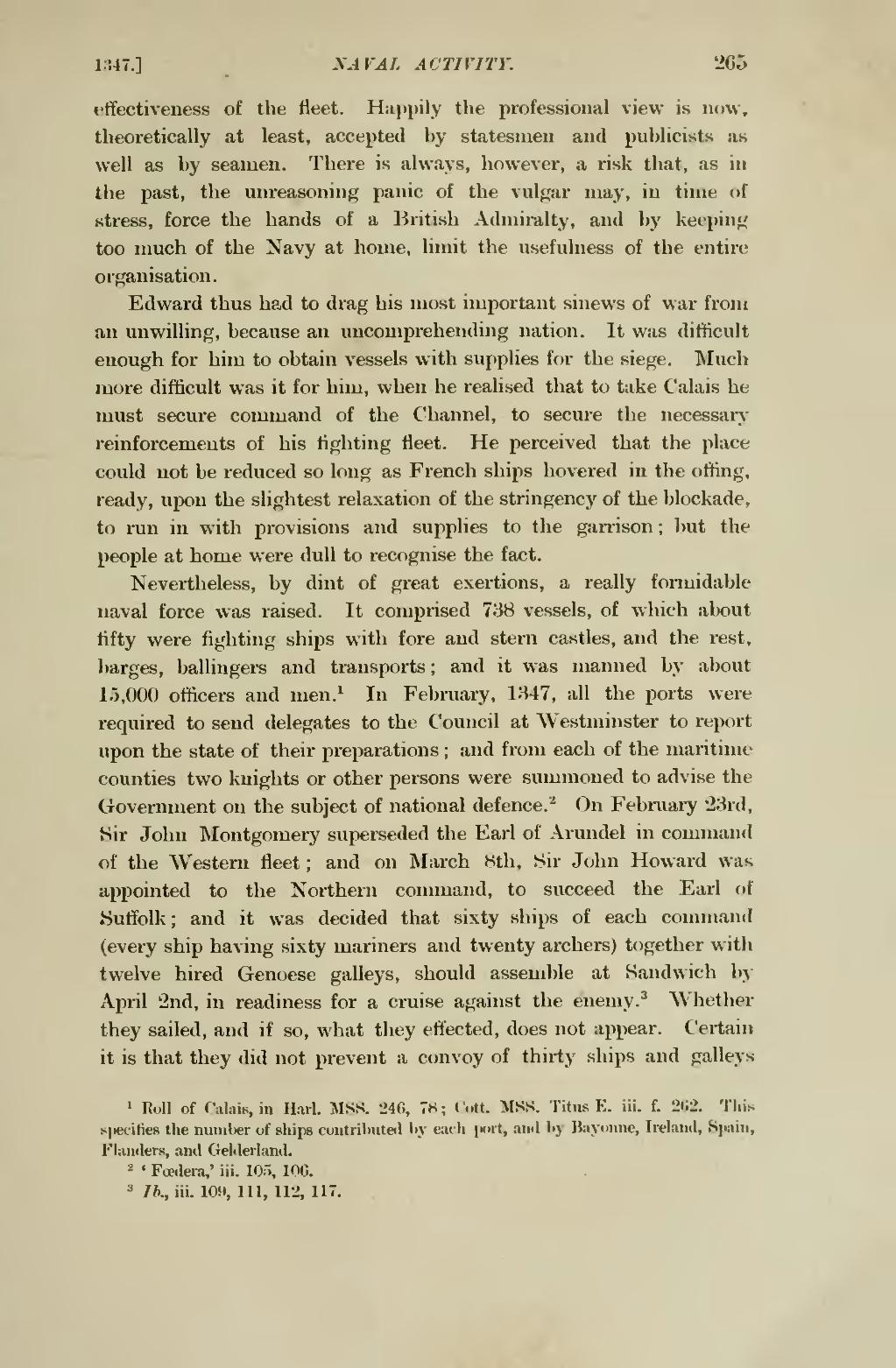effectiveness of the fleet. Happily the professional view is now, theoretically at least, accepted by statesmen and publicists as well as by seamen. There is always, however, a risk that, as in the past, the unreasoning panic of the vulgar may, in time of stress, force the hands of a British Admiralty, and by keeping too much of the Navy at home, limit the usefulness of the entire organisation.
Edward thus had to drag his most important sinews of war from an unwilling, because an uncomprehending nation. It was difficult enough for him to obtain vessels with supplies for the siege. Much more difficult was it for him, when he realised that to take Calais he must secure command of the Channel, to secure the necessary reinforcements of his fighting fleet. He perceived that the place could not be reduced so long as French ships hovered in the offing, ready, upon the slightest relaxation of the stringency of the blockade, to run in with provisions and supplies to the garrison; but the people at home were dull to recognise the fact.
Nevertheless, by dint of great exertions, a really formidable naval force was raised. It comprised 738 vessels, of which about fifty were fighting ships with fore and stern castles, and the rest, barges, ballingers and transports; and it was manned by about 15,000 officers and men.[1] In February, 1347, all the ports were required to send delegates to the Council at Westminster to report upon the state of their preparations; and from each of the maritime counties two knights or other persons were summoned to advise the Government on the subject of national defence.[2] On February 23rd, Sir John Montgomery superseded the Earl of Arundel in command of the Western fleet; and on March 8th, Sir John Howard was appointed to the Northern command, to succeed the Earl Suffolk; and it was decided that sixty ships of each command (every ship having sixty mariners and twenty archers) together with twelve hired Genoese galleys, should assemble at Sandwich by April 2nd, in readiness for a cruise against the enemy.[3] Whether they sailed, and if so, what they effected, does not appear. Certain it is that they did not prevent a convoy of thirty ships and galleys
